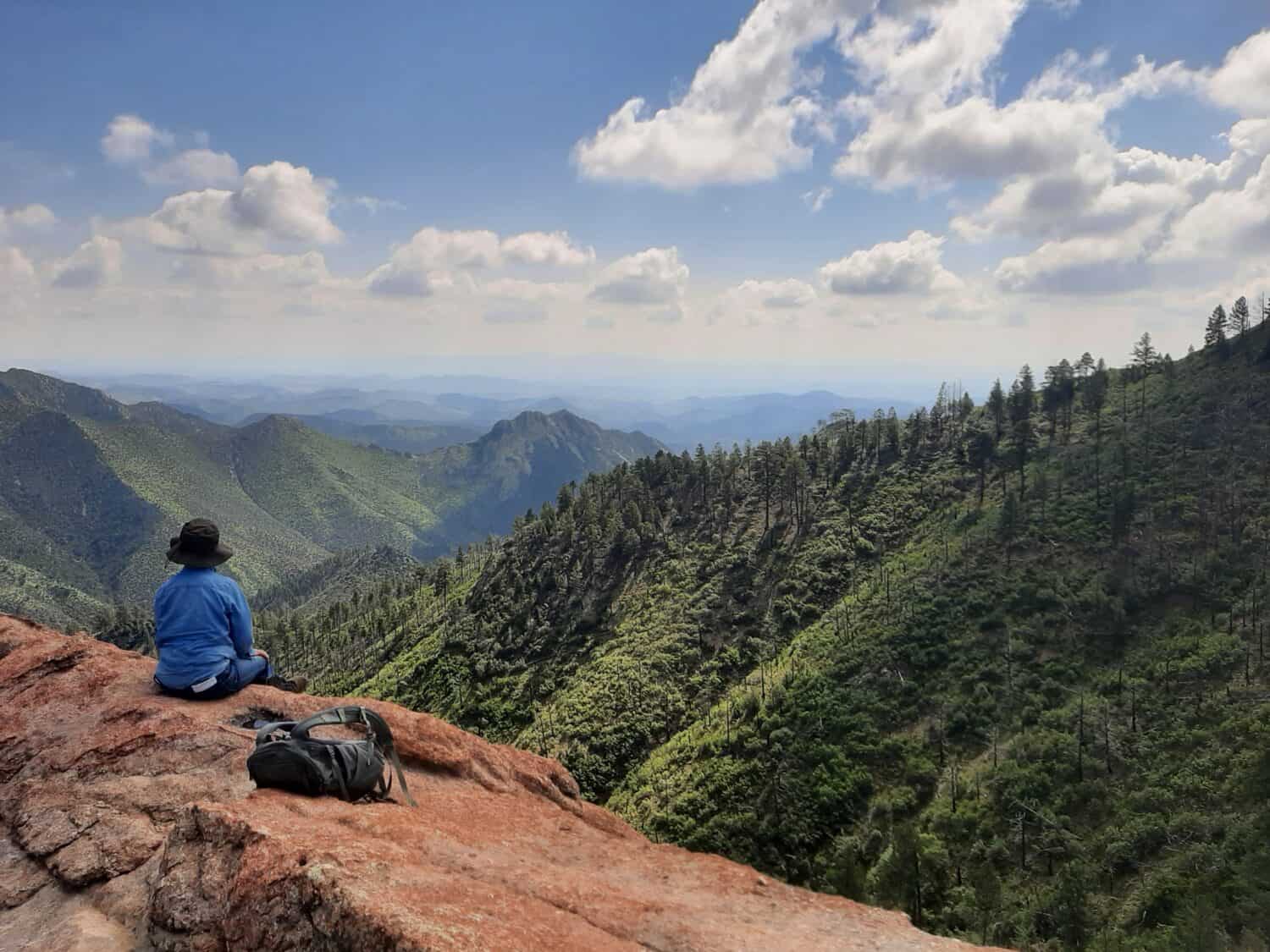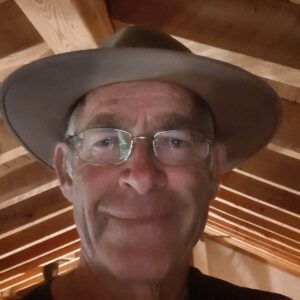There is a wild and special place here in southwestern New Mexico. Whitewater Baldy is the highest point in the Gila Wilderness at 10,895 feet and looks out over a vast and rugged landscape. From these high canyons comes the waters that weave together to become the Gila River, the longest stretch of undammed river in the Lower 48 states. Forest Road 150 or as it was originally called in the 1870’s, the North Star Road, is an old military and mining road running up through Black Canyon and currently separates the Gila and Aldo Leopold Wildernesses. These wild lands are just 2 of the 803 National Wilderness areas currently existing in the United States now but their distinction is that they were the first to be set aside.
In 1917, the US Forest Service commissioned Frank Waugh to conduct a national recreation use survey. Waugh recommended that sight-seeing, camping and hiking be given equal consideration with the consumptive uses of timber and grazing. In March of 1924, Aldo Leopold and Morton Cheney completed a plan which called for establishing a 755,000 acre wilderness area within the Gila National Forest. On June 3, 1924, the first wilderness area in the world was officially recognized. The Gila Wilderness Area was unceremoniously put into place as part of the Recreational Working Plan by Frank C. Pooler, US Forest Service Region 3 Forester.
We now are fast approaching the Centennial, the 100th anniversary of that first step in putting aside wild lands in order to allow them to continue to exist. Leopold and others like Arthur Carhart, the US Forest Service’s first Landscape Architect and Fred Winn, Gila National Forest Supervisor had recognized the rapidity with which civilization was devouring the wild lands.
When Leopold first arrived in the southwest in 1909, he rode a train from Albuquerque, New Mexico Territory to Holbrook, Arizona Territory. From there, he took a stagecoach on a gravel road for the two day trip to Springerville. All of their travel around the forest was by horseback or foot. There were very few roads and vehicles in the southwest, but times were changing.
In 1900, there existed 8,000 vehicles and by 1905, only 10 miles of paved roads in the United States. Then was a tremendous explosion of car & truck travel and by 1910, there were an estimated 500,000 vehicles on the roads. That number had grown to 7.5 million vehicles by 1920. Today, there are an estimated 287 million vehicles in the United States traveling 8 billion road miles per day on 4 million miles of roadway.
Leopold and Winn had also seen that the only way to have Wilderness areas was to set aside existing wild lands. Leopold wrote, “Wilderness was the one thing, perhaps the only thing, that man could never create. To artificially create wilderness areas would overwork the capacity for illusion of even little boys with wash-tubs.” He emphasized the need to set aside wild lands as a Land Laboratory, a place where we could study the natural world in its wild, original state in order to better understand how the world of nature worked. To create management practices based on scanty data, attempting to govern something not even remotely understood, he said, “was pure folly.”
When the Gila Wilderness was first set aside, it was under the supervision of District Ranger Henry Woodrow who had been working the area since 1909. Woodrow later reflected that in the first days of the Wilderness, trails were practically non-existent and the grizzly bear still roamed. It was a very wild land.
The Gila Wilderness was adjusted over the years until in 1964, it only contained 557,873 acres. Under the Johnson administration, The Wilderness Act of September 3, 1964 declared that, “it was to be the policy of Congress to secure for the American people of present and future generations the benefits of an enduring resource of wilderness. For this purpose, there is hereby established a National Wilderness Preservation System to be composed of federally owned areas designated by Congress as “wilderness areas” and these shall be administered for the use and enjoyment of the American people in such manner as will leave them unimpaired for future use and enjoyment as wilderness.”
The Wilderness Act’s definition of Wilderness states, “In contrast with those areas where man and his works dominate the landscape, a wilderness is hereby recognized as an area where the earth and its community of life are untrammeled by man, where man himself is a visitor who does not remain.”
In 1980, under the Carter administration, the portion of the original Gila Wilderness that had been degraded to Primitive Area status was reinstated as the Aldo Leopold Wilderness. It encompasses 202,016 acres of extremely remote and rugged wild lands. In 2013, the Silver Fire and then in 2022, the Black Fire, ravaged most of the Aldo Leopold Wilderness. The Whitewater Baldy Fire in 2012 burned almost 300,000 acres of the Gila National Forest and Gila Wilderness. These very large fires seem to be the norm now, but they weren’t always.
From the diary pages of Fred Winn, Gila National Forest supervisor, comes the story of Aldo Leopold’s Gila Forest inspection tour in May and June of 1922. Leopold met Winn at the Kingston Ranger Station but instead of heading out to look at the forest land they thought would work in their wilderness land proposal, they were delayed by nature. In 10 days, lightning started 41 forest fires on the Gila National Forest. Access to these blazes was mainly by horseback and by foot. They were much smaller fires as they were contained in just a few days.
Leopold was also realizing around this time that fire was not an absolute menace that had to be stopped at all costs but a very important part of a healthy forest ecology. His writings show an incremental change in his thinking about fire, but his cautional approach to change also reflected his having to deal with the very entrenched thinking by the agencies.
So, forest fire is part of life in the Southwestern forests. What we have contributed to this scenario though, is creating much of the setting that when coupled with deep drought, has enabled these recent fires of great size. One good thing that is obvious to the hiker through these burned areas is the mosaic of burn intensities. Some areas have burned very hot and destructive while others have been cleaned of quick fuels and will recover much quicker. Not all is lost. Nature is resilient and bounces back from these catastrophic events. What is also evident is that nature doesn’t bounce back in the same way. Plant and animal communities have often changed with the addition or disappearance of community members.
I will be writing more about our wilderness areas as the Gila Wilderness Area Centennial celebration is fast approaching in June of 2024. There are many activities being planned besides the big event and I will keep you all aware of the wheres, whats and whens.
Many of the roads and 800 miles of trails that give access to our wild lands are currently challenging due to flooding damage from the heavy summer rains on burned land. So, as you venture out to explore our wild surroundings, check in with the US National Forest District offices for current conditions. Be wise, cautious, appreciative and observant.

